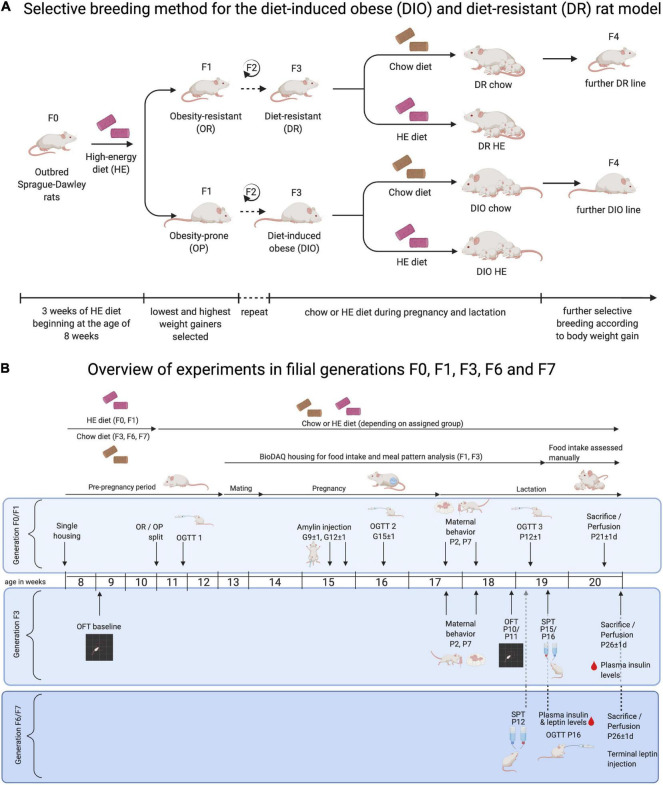FIGURE 1.
Overview of protocol for selective-breeding of DIO and DR rats and the timelines of experimental procedures in pregnant and lactating rat dams. (A) Outbred Sprague-Dawley rats (F0) were used to generate selectively bred colonies of diet- resistant (DR) and diet-induced obese (DIO) rats, according to protocols developed by Levin and colleagues. Following a 3-week challenge on sweetened high-energy diet (HE), rats were classified as obesity-resistant (OR) or obesity-prone (OP) based on their weight gain. OR and OP male and female rats were mated, and the process was repeated in F1 and F2 offspring. Rats were designated as DR and DIO from F3 forward. For breeding and experimental purposes, F3, F6, and F7 DR and DIO dams were maintained on chow or HE from the time of mating and until the time of pup-weaning. Offspring from chow-fed dams were used for colony maintenance. (B) Three experiments were carried out in dams from F0/F1, F3, and F6/F7 generations, respectively. Maternal body weight and food intake were collected at least weekly over the course of the studies. Experimental procedures were performed on the gestational (G) and postpartum (P) days indicated, including: oral glucose tolerance test (OGTT); amylin sensitivity test; pup retrieval and maternal behavior test; open field test (OFT); and sucrose preference test (SPT). Between P21 and P26, rat dams were perfused, and blood, brains, and livers were harvested for further analysis. Diagrams were created with a paid-subscription of BioRender.com.

